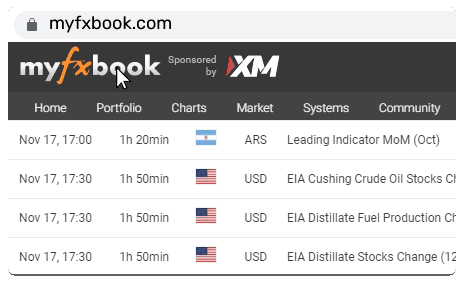Is it time to buy EURUSD?

Late cycle dollar strength meets the carry trade.
I see two key themes driving FX markets in the near term. The first is central banks continuing to battle inflation, yield curves staying inverted, and the dollar continuing to hold gains. The second is cross-market volatility continuing to sink - generating greater interest in the carry trade. Expect these trends to hold into Fed, ECB and BoJ meetings next week.
USD: Late cycle dollar strength continues.
The recent surprise rate hike by the Bank of Canada (BoC) had a notable impact FX market. Naturally, the Canadian dollar strengthened as investors interpreted the BoC's move as a sign that further tightening measures were on the horizon. However, the broader market reaction was characterized by an increase in short-term yields worldwide, further inversion of yield curves, and a strengthening of the US dollar. Following the BoC's hike, USD/JPY rose approximately 0.8%. The prevailing belief was that if both Australia and Canada found it necessary to pursue additional rate hikes, it was likely that the Federal Reserve would follow suit.
Consequently, the ongoing strength of the US dollar during this late cycle has emerged as the primary narrative for the summer. In the short term, it appears that the dollar will be able to retain most of its recent gains leading up to the Federal Open Market Committee (FOMC) meeting scheduled for next Wednesday. However, the release of the US May Consumer Price Index (CPI) on Tuesday will also serve as a significant driver in the market. My broader perspective maintains that the dollar will enter a bearish phase in the second half of 2023, most likely commencing in the third quarter, although there is a possibility of delay.
This brings us to my second notable observation, which pertains to the decreasing levels of volatility across various markets, favouring the FX carry trade. Remarkably, the VIX index, a measure of implied volatility for the S&P 500 equity index, has fallen not only below the levels observed prior to the invasion on February 22 but also below the pre-pandemic levels from March 2020. Like the impact of low interest rates and FX volatility, it is likely that investors believe policy rates will remain relatively stable throughout the year, with minor increases followed by subsequent decreases. The decline in volatility levels is conducive to the carry trade strategy, which particularly benefits currencies like the Mexican peso and the Hungarian forint in the emerging markets, as well as the Canadian dollar in the G10 space, as highlighted by Francesco Pesole. An investor who sold USD/MXN six months forward at the beginning of the year would have earned a return of close to 16% by now.
EUR: Range-bound into next week.
The recent rate hike by the Bank of Canada (BoC) had a notable impact on EUR/USD, with its implications for Federal Reserve policy serving as the primary driving force. While EUR/USD softened, it is worth noting that there was some hawkish rhetoric from influential figures within the European Central Bank (ECB), such as Isabel Schnabel. For a comprehensive preview of the ECB. Today's session includes revisions to Eurozone first-quarter GDP data, which is expected to be revised downward following the release of German figures. However, the market remains comfortable pricing in two additional 25 basis point rate hikes by the late summer. As a result, it is anticipated that EUR/USD will continue to trade within a range of 1.0650 to 1.0800.
It is widely anticipated that the SNB will raise the policy rate by 25 basis points to 1.75% on June 22. However, recent consumer price index (CPI) releases have shown a dip in core inflation below 2.0%, reducing the necessity for the SNB to strengthen the nominal Swiss franc. If President Jordan acknowledges this favourable CPI trend, EUR/CHF could drift towards 0.9800.
As discussed in our previous note, I now anticipate Norges Bank to raise rates to 3.75% (equivalent to two more hikes from the current levels) due to the weakness of the NOK. There are also significant risks of the peak rate reaching 4.00%. The short-term outlook for the krone remains uncertain, as the possibility of further tightening by the Federal Reserve keeps the illiquid and high-beta NOK under pressure. Additionally, Norges Bank's daily foreign exchange purchases have only been marginally reduced in June. However, I expect rate hikes and potentially larger reductions in FX purchases later this year, aligning with strong fundamental factors and a stabilization of risk sentiment. Consequently, I anticipate that EUR/NOK will approach 11.00 by late 2023.
This content may have been written by a third party. ACY makes no representation or warranty and assumes no liability as to the accuracy or completeness of the information provided, nor any loss arising from any investment based on a recommendation, forecast or other information supplied by any third-party. This content is information only, and does not constitute financial, investment or other advice on which you can rely.



















